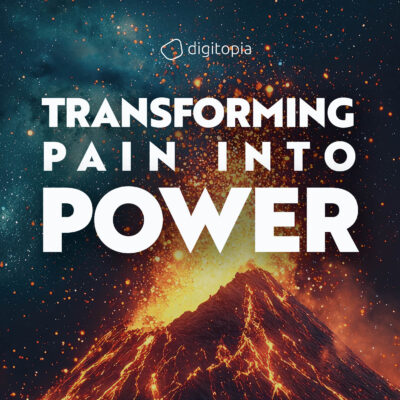
Attracting, retaining, and engaging top talent is one of the most critical issues facing organizations today. As the competition for skilled professionals intensifies, companies must find ways to stand out as employers of choice. However, this challenge goes beyond simple recruitment—it involves creating a workplace culture that not only attracts top talent but also keeps them engaged and motivated over the long term. For executives, particularly those responsible for human resources and organizational development, the pressure to build and maintain a strong talent pool can lead to significant strain. Yet, by addressing these challenges strategically, businesses can not only secure the talent they need but also create an environment where both employees and leaders thrive.
Understanding the Talent Challenge
In today’s fast-paced, knowledge-driven economy, talent is often the most valuable asset an organization has. Companies depend on their people to drive innovation, deliver exceptional customer experiences, and execute strategic initiatives. However, attracting and retaining top talent has become increasingly difficult due to a variety of factors:
- High Competition: The demand for skilled professionals, particularly in areas such as technology, digital transformation, and leadership, has never been higher. Companies are competing not just with their industry peers but also with firms in other sectors, as well as with startups that may offer more dynamic or flexible work environments.
- Changing Expectations: Today’s workforce has different expectations from previous generations. Employees are looking for more than just a paycheck—they want meaningful work, opportunities for growth, and a workplace culture that aligns with their values. Companies that fail to meet these expectations often struggle to retain top talent.
- Engagement and Retention: Even after securing top talent, the challenge doesn’t end. Keeping employees engaged and motivated is crucial for retention. Disengaged employees are more likely to leave, costing the organization both in terms of lost productivity and the expense of hiring and training replacements.
Case: The Talent Struggles of a Financial Services Firm
Consider “CapitalEdge,” a mid-sized financial services firm that has been struggling to attract and retain top talent. Despite offering competitive salaries, CapitalEdge has found it difficult to stand out in a crowded market. The company’s rigid corporate culture, coupled with limited opportunities for professional development, has led to high turnover rates, particularly among younger employees. As a result, the firm has been forced to spend significant resources on recruitment and training, only to see new hires leave after a few years.
CapitalEdge’s leadership team is aware of the problem, but they are unsure of how to create a more attractive and engaging work environment. The firm’s HR department is overwhelmed, trying to balance the demands of recruitment with the need to improve employee satisfaction and engagement. The result is a cycle where the company is constantly playing catch-up, never quite able to build the strong, stable workforce it needs to drive long-term success.
The Executive’s Strain
For executives like the Chief People Officer (CPO) or Chief Human Resources Officer (CHRO), the pressure to attract, retain, and engage top talent can lead to significant strain. These leaders are responsible for ensuring that the organization has the human capital it needs to achieve its strategic objectives, but they are often working within constraints that make this task incredibly challenging.
The strain comes from several sources:
- Balancing Competing Priorities: Executives must balance the immediate need to fill key positions with the long-term goal of building a sustainable talent pipeline. This often means making tough decisions about where to allocate resources and how to prioritize different initiatives.
- Managing Cultural Change: Attracting and retaining talent often requires changes to the organization’s culture, which can be difficult to implement. Executives must navigate resistance from within the organization while trying to create a culture that is more appealing to top talent.
- Maintaining Engagement: Keeping employees engaged is a continuous effort, requiring ongoing investment in leadership development, career growth opportunities, and employee well-being. For executives, this can feel like an endless task, with no clear endpoint in sight.
Case: The Strained CPO at CapitalEdge
Imagine Julia, the Chief People Officer at CapitalEdge. Julia is a seasoned HR professional with a deep understanding of the importance of talent management. She knows that to attract and retain the best people, the company needs to offer more than just competitive salaries—it needs to provide a compelling employee experience that includes career growth opportunities, a positive workplace culture, and alignment with employee values.
However, Julia is finding it increasingly difficult to achieve these goals. The firm’s leadership is focused on short-term financial performance, making it hard to justify the investments needed to improve employee engagement and development. Julia feels the strain of trying to balance the immediate demands of recruitment with the longer-term need to build a more attractive workplace culture. She is constantly firefighting—addressing immediate staffing shortages, dealing with high turnover rates, and trying to implement engagement initiatives with limited resources. The result is a growing sense of frustration and burnout, as Julia struggles to meet the demands of her role.
Moving Forward with Confidence
Overcoming the challenges of attracting, retaining, and engaging talent requires a strategic approach that focuses on building a strong employer brand and investing in employee development. For executives, this means not just reacting to immediate staffing needs but also thinking long-term about how to create a workplace culture that attracts and retains top talent.
It’s important to remember that both you and your business deserve better than the constant strain of managing talent challenges. By taking proactive steps to develop a clear talent strategy and invest in your people, you can create a more attractive and engaging work environment, ensuring that your organization is well-positioned to thrive in the competitive landscape of the modern business world.
Download Your Copy Today!
For more insights on overcoming challenges like navigating talent challenges, explore the Transforming Pain into Power Ebook. This chapter is just one part of a comprehensive guide that delves into the most pressing issues facing business leaders today, offering actionable strategies to turn obstacles into opportunities for growth and success. Discover the full range of chapters and empower yourself with the tools to transform frustration into fuel for progress.
Get your copy of the Transforming Pain into Power Ebook now and start your journey toward a more dynamic future!


